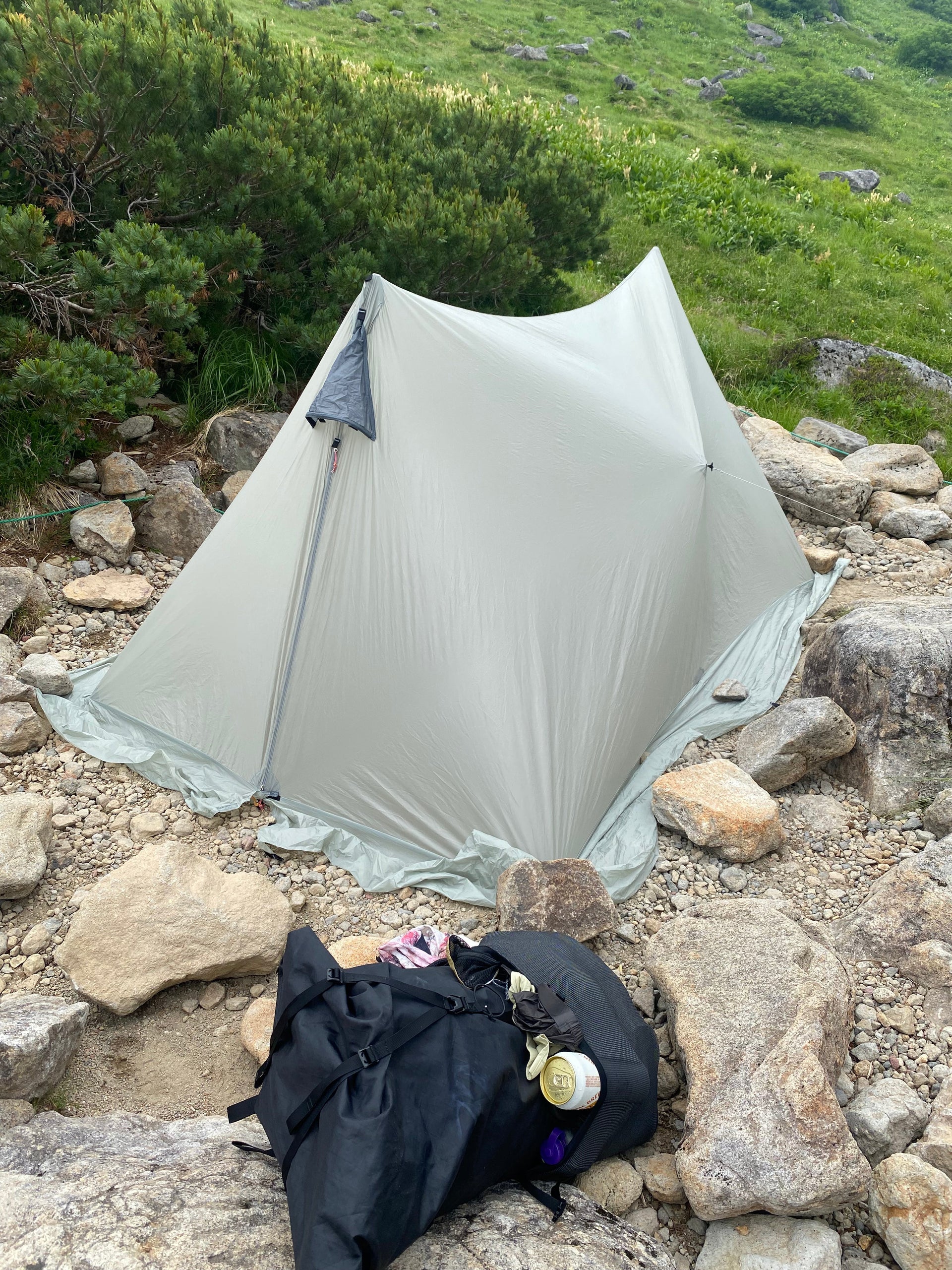At OHMI, we want people to enjoy the outdoors more casually and with lighter gear. That’s why we design and create equipment with this philosophy in mind, while keeping our products as affordable as possible.
With that in mind, our hope is that hikers who have always camped with self-standing, double-wall dome tents will also try our one-pole floorless shelters such as the Larda or Aero Tarp Duo for tarp-style camping in the mountains. That said, we also recognize that jumping straight into a floorless shelter can feel like a big step for those who’ve never used one before.
So in this article, we’ll address the common concerns first-time users tend to have with one-pole floorless shelters, and share practical ways to overcome them. To make it more relatable, I also asked a friend—who recently started tent camping—about what aspects of floorless shelters made them uneasy.
Common Concerns with Floorless Shelters
1. They look less wind-resistant
It’s natural to worry—after all, it’s just one center pole holding up a thin wall of fabric. But if properly anchored, these shelters can actually handle strong winds surprisingly well, sometimes even feeling more secure than dome tents.
The key is anchoring. Many people assume self-standing dome tents don’t need to be staked down, but in strong winds, both dome tents and floorless shelters must be secured.
2. Rain entering the shelter
A common fear, especially during summer thunderstorms in the mountains, is water pooling under your sleeping area. Choosing the right site is essential, but there are also shelter-specific tricks to help prevent water intrusion.
3. Feeling cold
Yes, floorless shelters often have small gaps at the base. They can feel chilly. Personally, after years of using them I’d gotten used to it, but when I recently trekked the Northern Alps with a skirted shelter, I was surprised by how warm it was inside.
Lowering the center pole height by 5–10 cm (a tip we share on the Larda product page) can reduce drafts, improve wind resistance, and help with rain protection too.
 3-night, 4-day trek in the Northern Alps with a skirted floorless shelter. The photo shows Kumonodaira on the first day.
3-night, 4-day trek in the Northern Alps with a skirted floorless shelter. The photo shows Kumonodaira on the first day.
4. Knocking over the center pole
A common beginner worry—“What if I kick it over when I turn in my sleep?” In practice, it’s sturdier than it looks, and there are also setup variations that eliminate this worry entirely.
Solutions
Bring a variety of stakes
Different ground conditions require different peg shapes. Strong anchoring is critical for wind resistance and maintaining the shelter’s shape.
Line the edges with rocks
Works like natural sandbags to reduce rain splashback and block drafts.
 Campsite at the Hakuba-dake summit lodge. With stormy weather in the forecast, I pitched the shelter quite low that day.
Campsite at the Hakuba-dake summit lodge. With stormy weather in the forecast, I pitched the shelter quite low that day.
Use a bivy in combination
A bivy sack (like OHMI’s MT Bivy) provides added warmth, weather protection, and peace of mind.
Dual Pole Extender
Converts the center pole setup into an A-frame with two trekking poles—more headroom, no center obstruction, and potentially more wind stability
Bathtub groundsheet setup
Why Choose a Floorless Shelter?
The biggest benefit, in my view, is the “doma”—a dirt-floor entrance space like in traditional Japanese houses. It makes setup and takedown incredibly simple, even in bad weather.
You can enter with shoes on, spread out your bivy or groundsheet, and lay down your mat and sleeping bag. In the morning, pack everything inside, then fold away the shelter last—staying dry and efficient.
Other benefits:
- A large vestibule-like space (often half the shelter) for gear storage.
- Much lighter than most dome tents. For example, compared with Montbell’s popular Stellaridge 2 (1,230 g), the OHMI setup of Larda (370 g) + MT Bivy (290 g) + Dual Pole Extender (66 g) + two trekking poles (330 g) totals only 1,056 g. And since the trekking poles are used for hiking anyway, the actual carried weight can be as low as 726 g—over 500 g lighter!
Conclusion
Floorless shelters aren’t “better” while dome tents are “worse.” Each has its place depending on the environment and what feels comfortable to you. But it’s also true that floorless shelters offer unique advantages you can’t get with a dome tent.
If this article helps even one person make their debut with a floorless shelter, that would make me truly happy.


